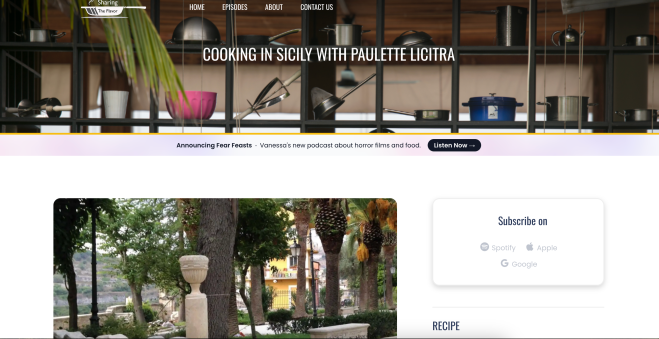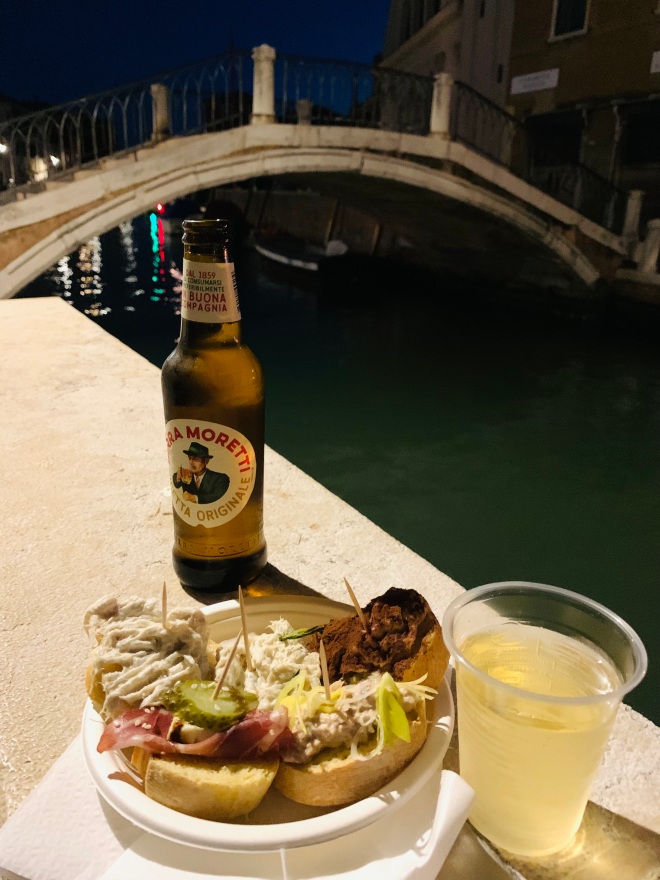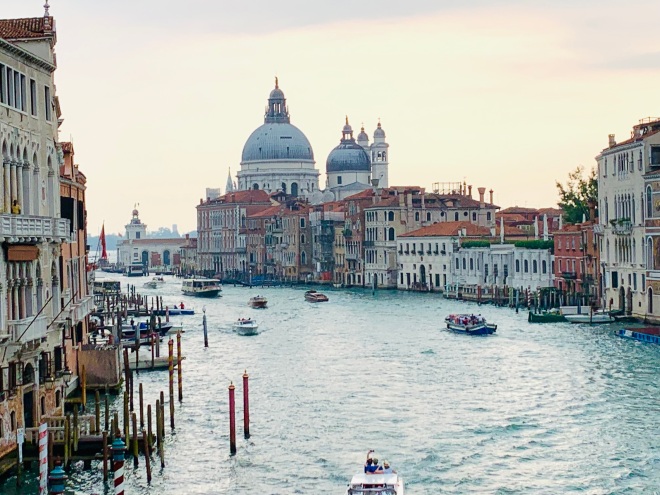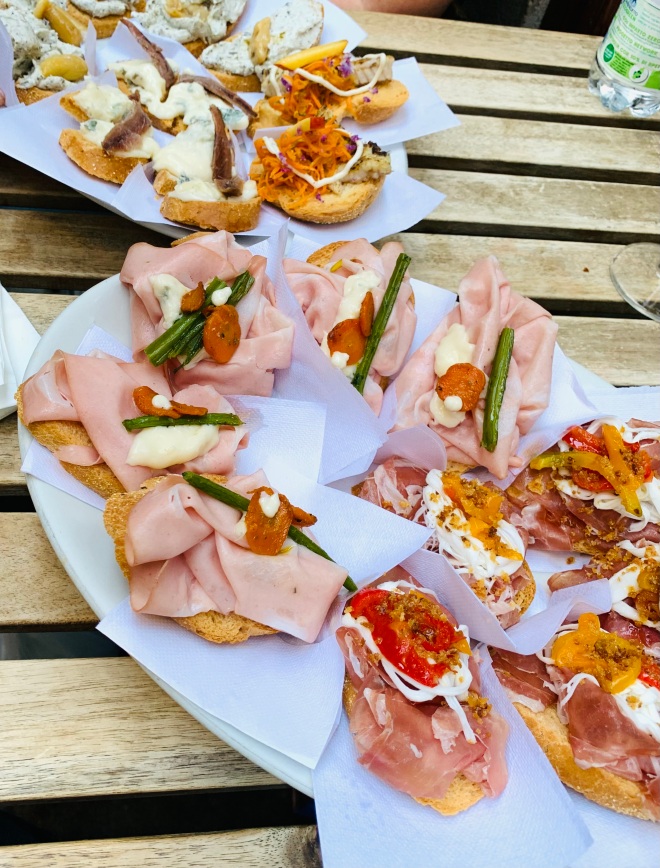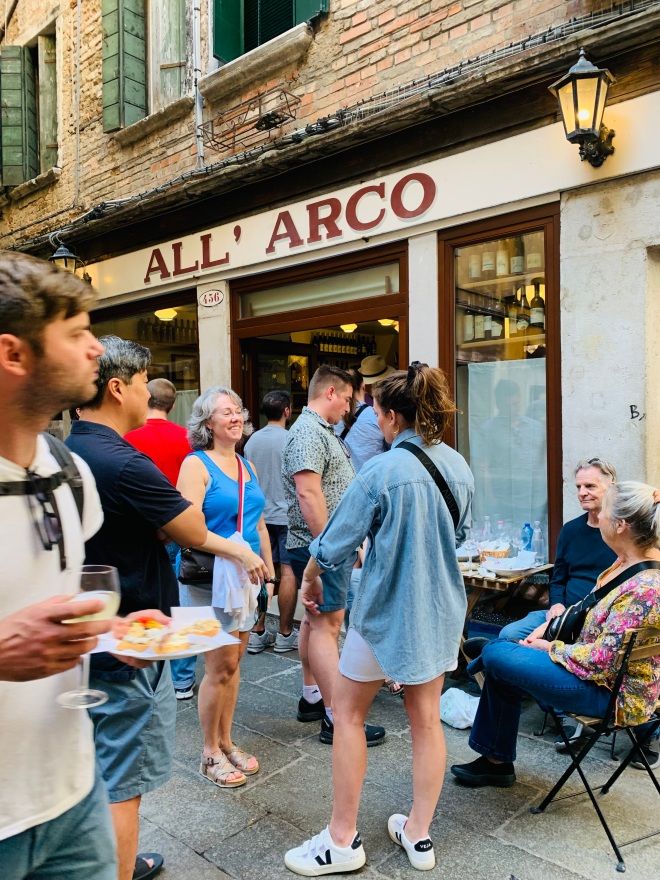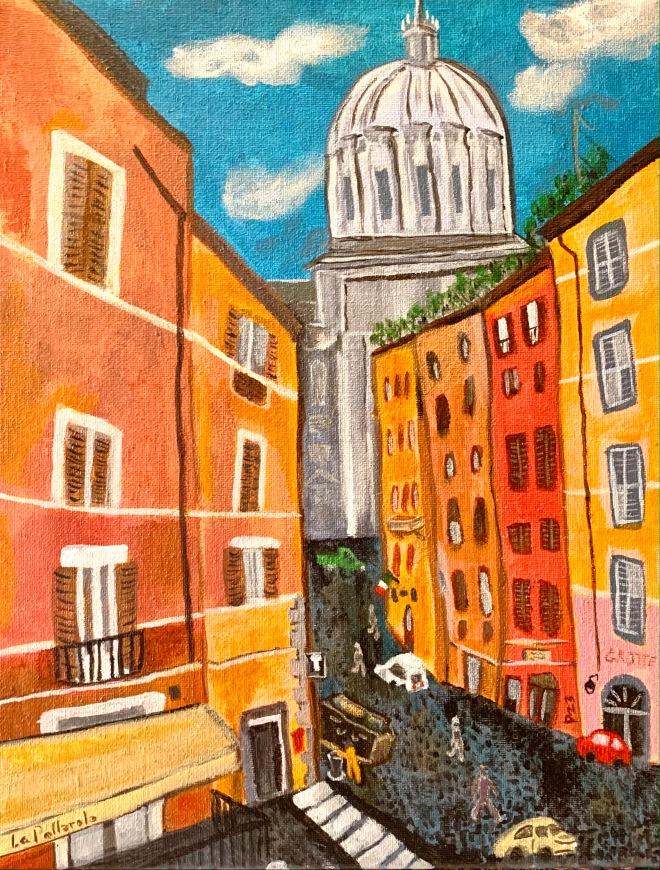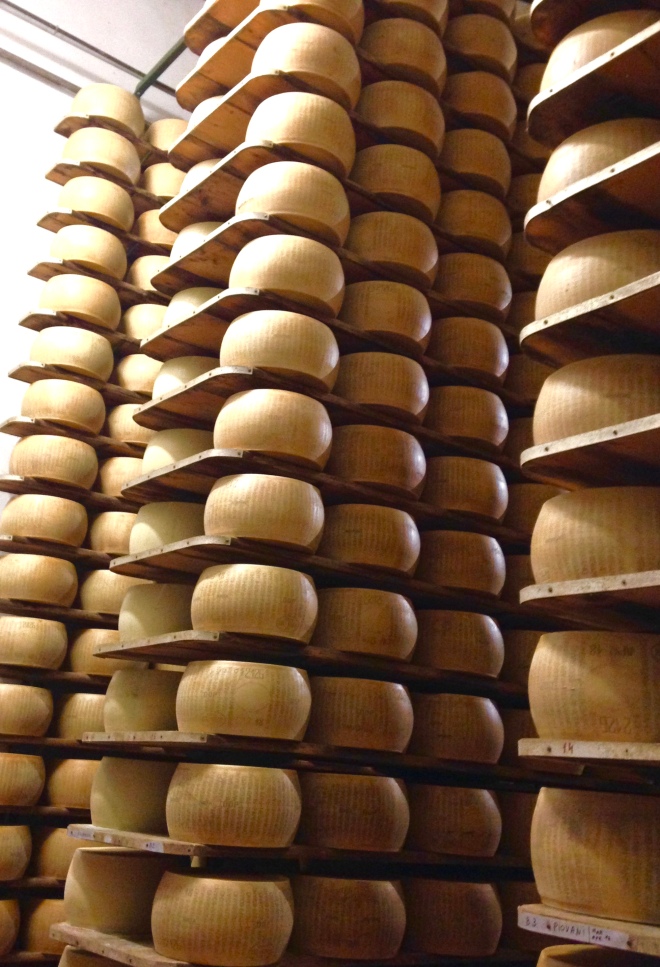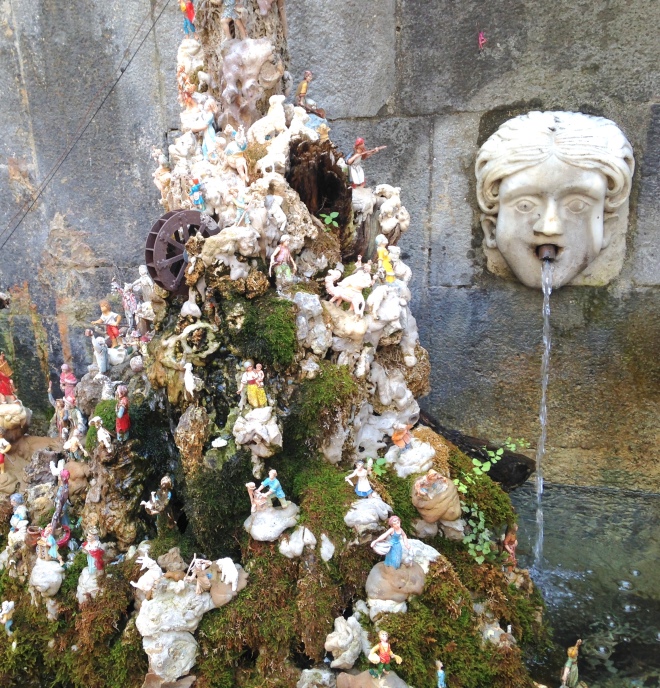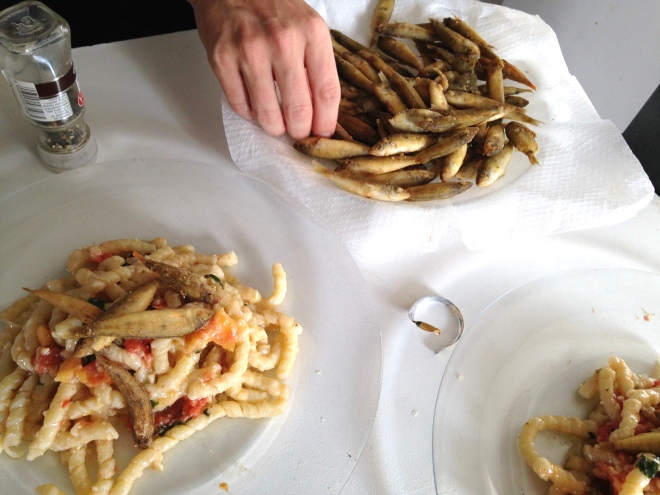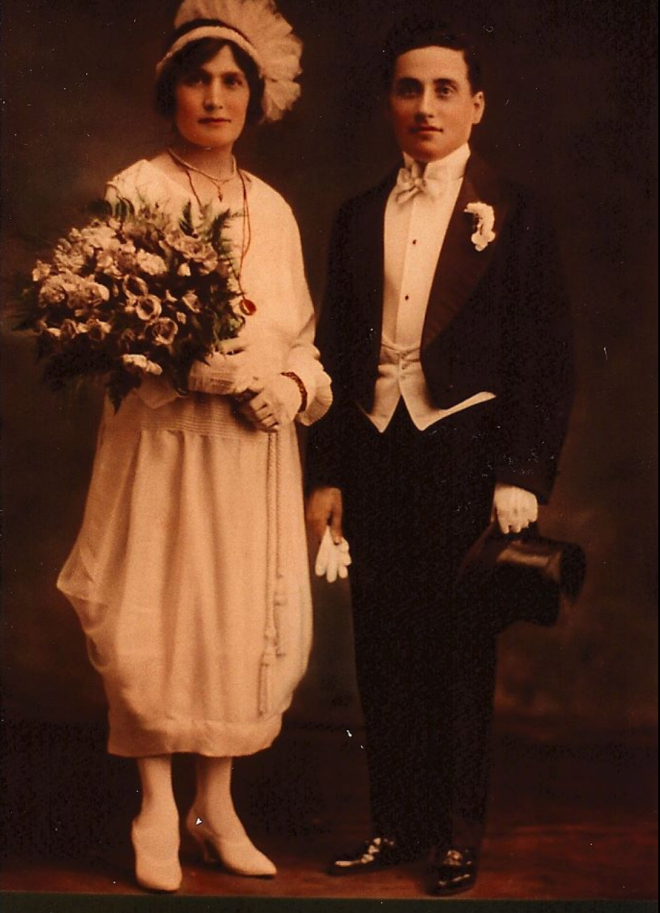
My grandparents from Ragusa
I had such a blast chatting recently with Andrew Gebby and Giovanni Franceschini on their Sharing the Flavor podcast. We jumped into the subject of Sicilian roots. Andrew’s grandfather came from Messina, and my paternal grandparents came from Ragusa– and maternal grandmother was from Palermo. Being second generation American sometimes feels like we just got here from a foreign world.
A few years ago I led a group of my cooking class students on a tour of Sicily, and we spent time in Ragusa. The people we met, the foods we ate, the places we were, and the air we breathed, were, to me, so familiar. Whatever my family brought back to NY, the traces of life lived in Sicily, all blended together for a grand meeting — Sicilian-American me embraced by origins of me.
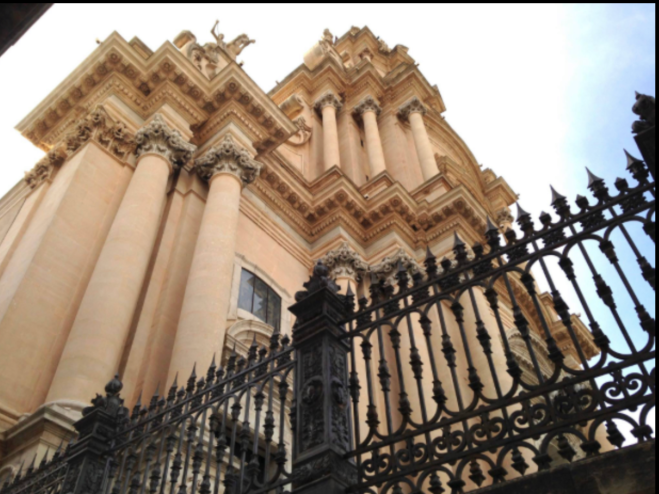
San Giorgio in Ragusa
Of course, the biggest sensory connections happened with food. My dad was famous for his “scaccia.” I grew up eating this unusual rolled stuffed pizza lightly filled with tomato sauce, cacciocavallo cheese, and basil leaves. It was as familiar as pasta fagioli, but nowhere to be found at any Italian-American restaurant, or any Italian-American household I knew.
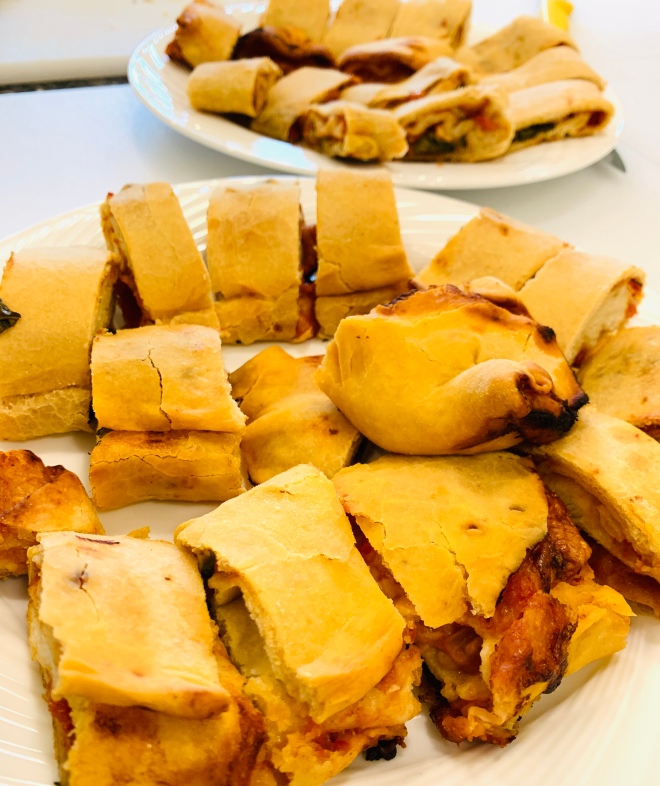
Dad’s Scaccia
On my first day in Ragusa, having coffee at a bar, I spotted a piece of scaccia in the panini showcase and blinked and blinked unsure what I was seeing. I ordered it immediately and on first bite was sent to the moon. Yes. This is my Dad’s scaccia. Here. Thousands of miles away. But not far, really, from his parents who walked these same Ragusane strade.

Scaccia at bar in Ragusa
These stories and more all come out in our podcast discussion deliciously focused on Sicily. Here’s the link: Sharing the Flavor …It’s a fun way to immerse in Sicilian experiences. All the dishes and recipes we talk about are at the bottom of this post. I hope so much you will try them out. Let me know how it goes. And by all means, contact me with any questions. Buon viaggio!
Dad’s Sicilian Scaccia 6 pieces
For the dough:
5 cups flour (all-purpose)
2 teaspoons salt
2 1/4 teaspoons yeast (1 package/envelope)
1 teaspoon sugar
1/4 cup olive oil, plus more to coat dough
1 egg, beaten
For the filling:
1 small onion, peeled and diced
olive oil for sautéing
1/4 cup white wine
28 ounces crushed tomatoes
salt & pepper to taste
1 lb. provolone cheese, cut into 1-inch thin slices (or caciacavallo if you can find it)
1 cup basil leaves
In the bowl of a stand mixer (or you can do this by hand) mix together the flour and salt. In a medium bowl or large measuring cup combine 1 1/2 cups warm water (tepid, not too hot, not too cool) with the yeast and the sugar. In a small bowl or cup mix the egg with the olive oil. Make a well in the center of the flour. When the yeast has “bloomed” (becomes puffy) pour the yeast water in the well and pour the egg/olive oil mixture in the well. Gently stir the flour and wet ingredients to roughly combine. Then mix on a slow speed with the dough hook for about 5 minutes until silky.
Take out dough hook. Smooth a thin film of olive oil over top of dough. Flip dough so all sides have a thin film of olive oil. Cover top of bowl with a clean dry kitchen towel and place in a draft-free place to rise. Let rise about 2 hours. It should double in size. Scoop dough out onto a work surface and cut into 6 pieces (use a bench scraper or knife). Roll each piece gently into a ball and wrap each ball in a pam-sprayed or lightly oiled piece of plastic. Don’t wrap too tight since dough will rise again in plastic. Let rise about an hour more.
Make the sauce: Heat a little olive oil in a medium saucepan. Add the onion. Sauté until wilted and softened, about 3 minutes. Add the wine, let evaporate. Add tomatoes. Stir to combine. Season with salt & pepper. Simmer for 10 minutes. Remove from heat, let cool to room temperature.
Cut the cheese into small thin slivers. Preheat oven to 425 degrees F.
Unwrap dough and gently press out the dough. Using a rolling pin, roll out an thin oval. Just below the center of the oval smooth a few tablespoons of sauce, across the width of the dough, sprinkle some thin slices of provolone cheese, and a few torn basil leaves. Lift the bottom border of dough over the filling, add more sauce, cheese and basil. Fold over again, and repeat one more time. Pinch to seal all around. Place on a parchment-lined sheet pan and bake for about 30 or until golden. Let sit for a few minutes before cutting into 2-inch slices. Serve warm or at room temperature.
Ragusa Scaccia- Stuffed Pizza w Tomato & Cheese 4 pieces (from Ragusa)
For the dough:
3 cups semolina, fine ground, plus more for bench flour
1 teaspoon salt
1 tablespoon olive oil
1 package yeast (2 1/4 teaspoons)
1/2 cup warm water
For the filling:
1 small onion, peeled and diced
olive oil for sautéing
1/4 cup white wine
28 ounces crushed tomatoes
salt & pepper to taste
1 lb. provolone cheese, cut into 1-inch thin slices (or caciacavallo if you can find it)
1 cup basil leaves
Whisk flour and salt to combine. Drizzle olive oil on top. Mix yeast with warm water, wait 2-3 minutes until yeast blooms. Make a well in the center of the flour and pour in yeast water. Mix gently with your hands, moving the damp flour between your fingers. Add 2/3 to 3/4 cup more water. Mix until dough starts to form, then start kneading to bring it together. Knead until a smooth dough forms, about 5 minutes. Break into 4 pieces. Roll each into a ball. Place in a draft-free spot covered with a few layers of clean kitchen towels. Let rise 1 hour.
Make the sauce: Heat a little olive oil in a medium saucepan. Add the onion. Sauté until wilted and softened, about 3 minutes. Add the wine, let evaporate. Add tomatoes. Stir to combine. Season with salt & pepper. Simmer for 10 minutes. Remove from heat, let cool to room temperature.
Cut the cheese into small thin slivers. Preheat oven to 425 degrees F.
Roll out one of the dough balls as thin as possible. (less than a 1/8”) Spoon a thin layer of sauce in the center, across to the edges. Add some cheese pieces and a couple of basil leaves. Fold over the top to the center. Spoon little sauce on top and add a few pieces of cheese and a basil leaf. Fold over the other end and repeat. Fold 2 sides in and add sauce and cheese. Fold to close like a square package. Repeat with the rest of the dough. Place scaccia on a parchment lined baking pan. Bake for about 30-40 minutes until golden and charred in spots. Cut each scaccia into squares and slices. Serve.
Trapanese Pesto (Almonds, Tomatoes & Basil) (from Palermo)
3 small ripe tomatoes
1/2 cup almonds without the peel (whole or slivered)
2 garlic cloves, peeled & halved
1/2 cup fresh basil leaves AND MINT
1/4 cup grated pecorino cheese (plus more for serving at the table)
approximately 1/3 cup olive oil
salt & pepper to taste
1 lb. Fusilli or favorite cut pasta
Bring a medium saucepan, halfway full of water, to a boil. Cut out the stem mark from each tomato and cut a superficial “X” at the bottom of each tomato. Drop tomatoes into boiling water. Let sit for about 1-2 minutes. Lift out with a slotted spoon into a bowl. Run cool water over tomatoes. Drain.
Peel skin off of tomatoes. Cut them into quarters and push out the seeds from all the tomato quarters. Discard seeds and skins. Cut tomato quarters into about 3 pieces each. Place in a bowl and set aside.
Place the almonds and half of the garlic in the bowl of a mortar and pestle. Pound and press the almonds and garlic, breaking it down to small pieces and pulpy. As you work, add basil leaves a little at a time, pounding into the mixture. You want to get it finely mashed but small chunks are okay. Drizzle a little olive oil. Add the rest of the garlic and basil leaves, pound until broken down fine. (Alternatively, use a food processor. Don’t over-process…break it down so that you can still see tiny pieces of almond.)
Meanwhile, set a pasta pot of water on the heat to boil. When boiling, add a generous amount of salt. And add pasta. Stir until the water comes up to a boil again.
Scrape the pesto into your serving bowl. Add 1/4 cup of grated pecorino. Season with salt & pepper. Add a couple of spoonfuls of pasta water. Mix to combine. Add a drizzle of olive oil. Add the tomatoes. Press tomatoes slightly with a potato masher, leaving a lot of chunks, too.
When pasta is done, scoop a cupful of pasta water and reserve. Then drain pasta. Mix drained pasta with the pesto. Stir to coat and combine. Drizzle a little olive oil. Add a little pasta water if the mixture is dry. Serve, passing extra grated pecorino at the table.
Almond Cookies Dipped in Crushed Almonds w Candied Cherry (from Palermo)
2 cups almond flour
1 cup sugar
1/4 teaspoon orange or lemon extract
3 egg whites
1 cup sliced almonds, crushed (I put it in a ziplock bag and press with my fingers to crush)
1 dozen candied or maraschino cherries, quartered
Preheat oven to 400 degrees F.
In a medium mixing bowl, whisk together the almond flour and sugar, with a fork. Stir in the extract and egg whites and mix until a dough forms. Knead lightly to combine. Dough will be sticky. Place crushed almonds on a flat plate. Pull off a small amount of dough and roll into a 1-inch to 1&1/2-inch ball. Roll each ball in the crushed almonds, place on a parchment lined sheet pan, gently press a piece of quartered cherry on top of each. (makes about 1 dozen or so). Bake for about 12 minutes until golden.
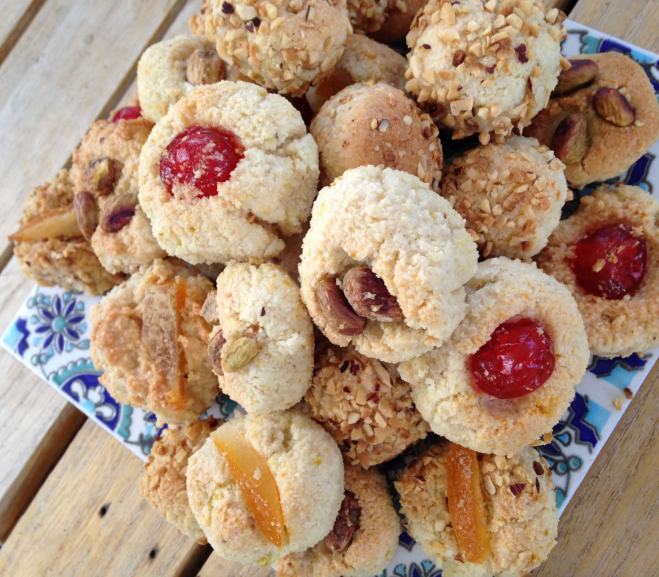
Almond Cookies baked on a boat in Palermo harbor
